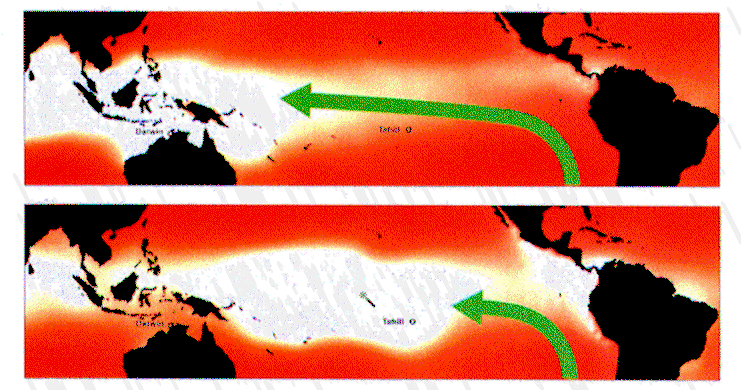 El Nino and Climate Prediction
El Nino and Climate Prediction
Reports to the Nation On Our Changing Planet, Spring 1994
A publication of the University Corporation for Atmospheric Research pursuant to National Oceanic and Atmospheric Administration Award No. NA27GP0232-01.

Sir Gilbert walker provided an important clue concerning El Nino when he
discovered that air pressures at sea level in the South Pacific seesaw back and forth between two distinct patterns. In the "high index" phase of what Walker referred to as the "Southern Oscillation" (upper map for November 1988) pressure is higher (darker red) near and to the east of Tahiti than farther to the west near Darwin. The east-west pressure difference along the equator causes the surface air to flow westward, as indicated by the long arrow. When the atmosphere switches into the "low index" phase (lower map for November 1982) barometers rise in the west and fall in the east, signaling a reduction or even a reversal of the pressure difference between Darwin and Tahiti. The flattening of the seesaw causes the easterly surface winds to weaken and retreat eastward as shown. We now know that the "low index" phase is usually accompanied by El Nino conditions.
Credits
Disclaimer | Privacy Policy
 El Nino and Climate Prediction
El Nino and Climate Prediction El Nino and Climate Prediction
El Nino and Climate Prediction